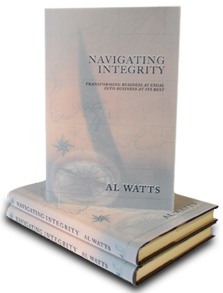by Bill Gjetson
(This month’s guest author is Bill Gjetson, who shares my belief that stories play an important role shaping a leader’s and organization’s identity. After a 30 year career in Human Resources with Caterpillar, Bill is now engaged in experience-based leadership coaching and consulting; helping leaders harness the power of storytelling is an integral part of his practice. Bill can be reached at gjetson789@comcast.net)
Leaders must know how to set direction as well as how to engage followers. A great strategy without a fully committed workforce prepared to execute it is a failed strategy.
Storytelling is a powerful way to engage team members. Leaders who master the craft of storytelling have a potent arsenal for explaining strategy and inspiring performance. This is not to suggest that leaders tell tall tales or spin yarns. This is about authentic stories, stories true to the leader and true to the organization. An authentic story, fiction or non-fiction, is one that is relevant to the business context, sheds light on the situation, reveals meaning, defines a larger purpose, and motivates performers to give their very best.
For example, stories to inspire perseverance range from The Little Engine That Could, to the 1914 Shakleton expedition to the Antarctic, to the Battle of Britain and Churchill’s speech to students at Harrow school. In his closing remarks Churchill told them “This is the lesson. Never give in. Never give in. Never, never, never, never—in nothing great or small, large or petty, never give in…”.
Stories enable leaders to engage employees because people understand the world in terms of stories. There are four story categories a leader must master: Who Am I? Who Are We? Where Are We Going? How Will We Get There? In addition to story content, the leader needs to learn context (what story to tell and when to tell it) and process (how to tell the story).
“Who Am I?” is the gateway story. Employees need to know who the leader is on a personal level, before they will listen to anything else the leader has to say or ask of them. The “Who Am I?” story must be faithful to the people and events that shaped the leader’s life. Telling the story opens the way to building connections and trust. Noel Tichy, in The Leadership Engine, puts it this way:
“The most effective leaders are those who are in touch with their leadership stories….When we know our stories, we know ourselves….(The leader’s stories) allow other people to know us. Stories create real, human connections by allowing others to get inside our minds and our lives.”
The next three stories are all about the employees and the journey they are on together. Employees need to know who they are where they are going, and how they’ll get there. According to Howard Gardner, in Leading Minds:
“The story is the basic human cognitive form. The artful creation and articulation of stories constitutes a fundamental part of a leader’s vocation. Narratives that help individuals think about and feel who they are, where they have come from, and where they are headed….constitute the single most powerful weapon in a leader’s literary arsenal.”
“Who Are We?” stories encompass the organization’s history, critical events, and core values. These are stories about the people and events that brought the organization into being , guided its development, and insured its long term success. These are stories about founders, builders, and anyone and everyone who contributed to the creation of a strong, values-based organization. “Who Are We?” stories build organizational identity and loyalty.
“Where Are We Going?” stories are about the organization’s mission and strategy. They are stories about the future, about aspiration, about “who we will become”. These stories give meaning and purpose to the organization, and help employees understand what they are working for.
“How Will We Get There?” stories are the most demanding to craft and tell, because they are about how the organization will solve its most pressing problems, overcome challenges, deal with crises, or handle adversity. There are times in the life of every organization when things go wrong, dark clouds form, discouragement settles in and employees begin to lose hope. On these occasions, the leader can draw on the history of the organization, or use stories from another time and place, to keep hope alive, sustain effort, and show employees that they can prevail.
Developing narrative competence (knowing how and when to tell stories) and mastering the Four Stories will go far towards enabling a leader to build a fully committed workforce and execute strategy.
How will you harness the power of stories?
“Lessons of wisdom have the most power over us when they capture the heart through the groundwork of a story, which engages the passions.” Laurence Stern







Thanks for the great reminder. I really admire leaders who can tell stories naturally, the rest of us need to work at it.